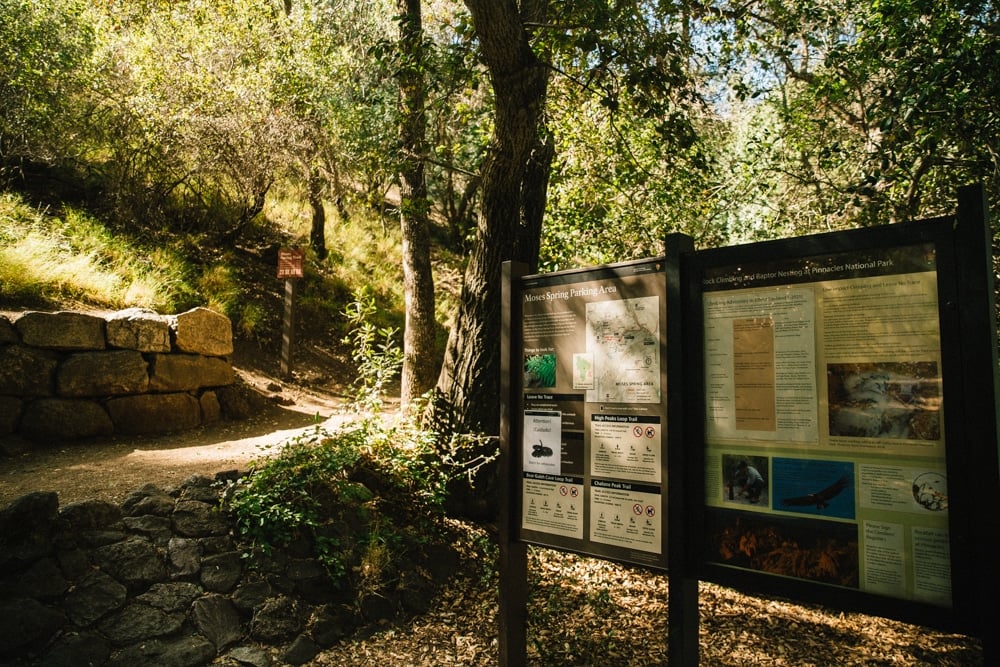Exploring new destinations is exciting. We’ve got the travel bug big time at Whimsy Soul, but amidst the excitement, it’s crucial to consider the impact of our travels on earth.
Sustainable travel, often referred to as ecotourism or responsible tourism, has emerged as a beacon of hope in the tourism industry, offering a path towards exploration that respects both the environment and local communities.
Here’s a comprehensive guide featuring sustainable travel tips and sustainable travel examples, empowering you to make informed choices to not only enrich your travel experiences, but also leave a positive footprint on the places you visit.
That said, it’s important to remember, you don’t need to be perfect! Just doing your best is the best you can do. Unless you’re flying a private jet from coast to coast every month, you’re just a drop in the ocean, and these tips are intended to help you make an impact in small way, but you don’t need to do them all. Start with one, and go from there!
From reducing carbon emissions to supporting local economies, these actionable insights will inspire you to embark on a journey of discovery while preserving the beauty and integrity of our planet!
Why Sustainable Tourism Is Important
The significance of sustainable tourism cannot be overstated in today’s world. As travelers, we have a profound responsibility to minimize our impact on fragile ecosystems, preserve cultural heritage, and support the well-being of local communities.
Sustainable tourism helps ensure the destinations we visit remain vibrant and resilient, both environmentally and economically, for generations to come. By embracing sustainable travel practices, we can mitigate the negative effects of mass tourism, such as habitat destruction, pollution, and cultural commodification.
It also promotes greater awareness and appreciation of our planet’s natural wonders and cultural diversity, fostering a deeper connection between travelers and the places they visit and fueling positive change.
Change that empowers local communities to thrive economically while preserving their cultural identity and way of life. By channeling tourism revenue into community-led initiatives, sustainable tourism creates opportunities for education, infrastructure development, and environmental conservation, ultimately improving the quality of life for residents in tourism destinations.
In essence, sustainable tourism is not just a trend but a fundamental shift in the way we approach travel. It embodies the principles of stewardship, respect, and collaboration, paving the way for a more harmonious relationship between humans and the planet. As we embark on our travel adventures, let us embrace the ethos of sustainable tourism and strive to be mindful, responsible stewards of the world we inhabit.
10 Sustainable Travel Tips That Won’t Cost The Earth
Incorporating sustainable practices into your travel routine can significantly reduce your environmental impact and contribute to the preservation of our planet. Because who wants to live in a world without flowers and baby polar bears?? Here are ten practical tips to help you travel more sustainably!
Transportation
Ready to hit the road (or the skies) in a more eco-friendly way? Check out these fun and easy tips to make your travel more sustainable and leave a smaller footprint on our beautiful planet!
1. Offset Your Carbon Emissions
Offset your carbon emissions by investing in carbon offset programs, which fund projects that reduce or capture greenhouse gas emissions elsewhere. This helps alleviate the environmental impact of your travel activities, such as flights or road trips, by supporting initiatives like reforestation, renewable energy development, or methane capture projects.
There’s lots of programs to choose from like Terrapass, Verra and the United Nations Carbon Offset Program, but you don’t have to get fancy. You can volunteer your time or money to a local tree planing organization. Or really any organization with a mission to better the planet.
Carbon offset programs enable travelers to take responsibility for their carbon footprint and contribute to global efforts to combat climate change while traveling sustainably.
Offsetting your carbon emissions contributes to local communities’ resilience against climate change. By supporting carbon offset programs that fund renewable energy projects or reforestation efforts, you empower communities to adapt to environmental challenges and build sustainable livelihoods.
You can also take proactive steps to offset the carbon emissions generated by your travels through reputable carbon offset programs. These initiatives invest in projects that reduce greenhouse gas emissions, such as renewable energy projects, reforestation efforts, or methane capture projects.
You can mitigate the environmental impact of your travel and contribute to global efforts to combat climate change!
2. Fly Less
We love Taylor Swift, but we definitely don’t love her carbon emissions 👀 You can educe your air travel footprint by flying less and exploring alternative transportation options whenever possible. Air travel contributes significantly to carbon emissions and environmental pollution, so minimizing flights can help mitigate your carbon footprint and support sustainable travel practices.
Consider traveling by train, bus, carpooling, or cycling for shorter distances to reduce your environmental impact and travel more responsibly. Choosing to fly less not only reduces your carbon footprint but also fosters a greater appreciation for slow travel and the journey itself.
By embracing alternative modes of transportation such as trains, buses, or ferries, you can embark on scenic adventures and immerse yourself in the landscapes and cultures along the way. Additionally, opting for overland travel promotes sustainable tourism development, supports local economies, and reduces the environmental impact of your journey.
Again, it’s important to remember – that commercial flight you booked packed with people isn’t the problem. You’re basically carpooling in the sky, so book that flight and make smart decisions once you land.
3. Explore Eco-Friendly Transportation Options
Go for greener modes of transportation that are more friendly to our planet, such as trains, buses, or electric vehicles, which have a lower carbon footprint compared to traditional fossil fuel-powered vehicles. Consider booking direct flights when traveling long distances to minimize emissions from take-offs and landings.
Additionally, embrace eco conscious alternative modes of travel like using public transportation, cycling or walking to explore destinations up close while reducing your environmental impact.
Using public transport is one of our favorite hacks to really see a new city and sometimes it’s even the part of the attractions like the incredible art you find in the Stockholm metro stations! It’s also a way to see how the locals really live!C
Accommodations
Choosing where to stay is a crucial part of sustainable travel, but it also means finding the best places to stay when traveling the world. Sustainable accommodations tend to be more authentic, and therefore more memorable!
4. Choose Eco-Friendly Accommodation
Choose eco-friendly accommodation options that prioritize sustainability and environmental stewardship. Look for hotels, resorts, or lodges that have implemented green initiatives such as energy efficiency, water conservation, waste reduction, and recycling programs.
Eco-friendly accommodations minimize their environmental impact while providing comfortable and responsible lodging options for eco-conscious travelers. Choosing eco-friendly accommodation not only minimizes your environmental impact but also promotes responsible tourism practices and supports innovative sustainability initiatives.
By staying at green-certified hotels or eco-lodges, like AutoCamp and Bardessono, you directly contribute to conservation efforts, community development projects, and environmental education programs.
Eco-friendly accommodations also often offer immersive experiences that connect you with nature and local culture, enriching your travel experience while leaving a positive legacy in the places you visit. Check out this list of 9 eco hotels in major U.S. cities.
Activities & Experiences
How you spend your time at your destination can make a big difference, both when it comes to sustainability and ensuring your trip is an unforgettable adventure filled with meaningful experiences!
5. Visit Less Crowded Destinations
Explore less crowded destinations to reduce over tourism and alleviate pressure on popular tourist hotspots. By venturing off the beaten path and discovering hidden gems, you can enjoy more authentic and immersive travel experiences while supporting local communities and preserving cultural heritage.
One way to find less traveled destinations is by going to Tripadvisor’s “Things to Do” list for a city and exploring beyond the most popular highlights. You can also go in the off season, which almost guarantees less tourists.
For a more traditional route, do what no one else does–look at maps! You can find hidden gems that are often looked over by travel websites. Places that are away from main roads tend to be interesting destinations.
A useful tip is to search for the name of a municipality along with terms like “museum” or “heritage site” in the local language. Small towns and rural population centers rarely get many tourists but almost always have something to offer, like a pretty temple, a small museum, or local cuisine.
Less crowded destinations offer opportunities for global sustainable tourism and responsible travel practices, for a more balanced and sustainable tourism industry. Exploring less crowded destinations offers a unique opportunity to connect with nature, culture, and local communities on a deeper level.
6. Support Local Businesses
Support local businesses and artisans by purchasing souvenirs, dining at locally-owned restaurants, and booking tours or activities with community-based operators. This small action that you might already being doing helps stimulate the local economy, create job opportunities, and preserve cultural authenticity in destination communities.
By choosing to spend your money locally, you can make a positive impact on the lives of local people and contribute to sustainable tourism development.
Supporting local businesses is more than just a transaction—it’s a meaningful way to connect with communities, celebrate diversity, and preserve cultural heritage. By patronizing family-owned shops, markets, and eateries, you gain insight into local traditions, flavors, and craftsmanship while supporting livelihoods and entrepreneurial endeavors.
Additionally, forging relationships with local artisans and entrepreneurs fosters mutual respect, cross-cultural understanding, and positive social change within destination communities.
7. Respect Wildlife
Respect wildlife and natural habitats by observing animals from a safe distance, avoiding feeding or disturbing them, and refraining from purchasing products made from endangered species.
Whether it’s the sacred Japanese Sika deer at Nara Park, or the grizzlies at Lake Clark National Park in Alaska, it’s important to remember you’re the one cutting in on their “me time.”
Responsible wildlife encounters prioritize animal welfare, conservation, and ethical tourism practices, ensuring that wildlife populations remain protected and respected by travelers. By respecting wildlife, you can contribute to biodiversity conservation efforts and promote sustainable travel experiences for future generations.
8. Leave No Trace
Follow the principles of Leave No Trace to minimize your environmental impact while exploring natural areas. Pack out all trash, dispose of waste properly, stay on designated trails, and avoid damaging vegetation or wildlife habitats.
Leave No Trace practices help preserve the integrity and beauty of natural landscapes, ensuring that they remain pristine and accessible for future generations to enjoy. This means you can minimize your environmental footprint and promote responsible stewardship of the environment.
Go The Extra Mile
Contributing to sustainability efforts doesn’t just mean recycling. There are tons of enriching experiences out there that will leave you feeling better and more fulfilled for having engaged in them.
9. Support Sustainable Tourism Initiatives
Support sustainable tourism initiatives and organizations that promote responsible travel practices, community engagement, and environmental conservation. Sustainable tourism initiatives focus on minimizing negative impacts on the environment, preserving cultural heritage, and benefiting local communities economically.
This way you can contribute to positive social and environmental outcomes while enjoying meaningful travel experiences that leave a lasting positive impact.
 10. Engage in Volunteering or Conservation Projects
10. Engage in Volunteering or Conservation Projects
Enhance your travel experience by volunteering with local conservation organizations or participating in community-based projects focused on environmental restoration, wildlife conservation, or sustainable agriculture.
These opportunities not only allow you to contribute directly to positive environmental outcomes but also foster meaningful connections with local communities and ecosystems.
5 Easy Green Travel Hacks You Can Use Today
If you’re looking for simple ways to make your travels more eco-friendly, these easy green travel hacks are a great place to start. Implementing these small changes can lead to a big impact on the environment, making your adventures more sustainable and enjoyable!
1. Pack Light
Who needs ten outfits for a weekend trip? Certainly not me, though I have certainly been found guilty of overpacking before. But by packing only the essentials and minimizing excess baggage, you can travel more eco-consciously and efficiently. Packing light reduces the weight of your luggage, which in turn decreases fuel consumption and reduce carbon emissions during transportation.
The best tip for packing smart and not excessive: PACKING CUBES. Try planning your outfits ahead of time, and finding ways to mix and match your pieces so you take less!
You can also travel easier–I know I hate lugging my bags through the airport. By minimizing the weight of your luggage, you can easily navigate through airports, train stations, bustling city streets, wherever the journey may take you.
Packing light also encourages mindful consumption and helps you focus on the essentials, leading to a simpler and more fulfilling travel experience. Plus, more room for souvenirs!
2. Bring a Reusable Water Bottle
Bring a reusable water bottle to minimize plastic waste and reduce your environmental footprint while traveling. Refill your bottle from tap water or water stations to avoid single-use plastic bottles, which contribute to pollution and waste in destinations around the world.
Just don’t forget to empty it or chug before you hit the security line at the airport, and refill once you said hi to your gate. The San Francisco International Airport has some of the BEST water refill stations ever, but you should be able to find somewhere to refill at any airport. Hot tip! Ask your Starbucks barista to fill it up, you know they’re everywhere!
Reusable water bottles are a sustainable alternative that helps conserve natural resources, reduce plastic pollution, and promote responsible travel practices.
Bringing a reusable water bottle is not just about reducing plastic waste—it’s also about promoting access to clean drinking water for communities around the world. By choosing to refill your bottle from local sources, you support sustainable water management practices and contribute to the preservation of freshwater resources.
Stanley cups are a hit right now, and Hydroflasks have certainly had their time in the spotlight, but any reusable water bottle can make a difference!
3. Use Reusable Shopping Bags
Opt for reusable shopping bags instead of single-use plastic bags when shopping for souvenirs or groceries during your travels. Reusable bags are eco friendly alternatives that help reduce plastic pollution, conserve resources, and minimize waste in destination communities. By carrying reusable shopping bags, you can make a positive impact on the environment and support sustainable travel practices.
Using reusable shopping bags goes beyond environmental conservation—it’s a tangible way to support local economies and foster community resilience. By investing in locally-made reusable bags or purchasing souvenirs from artisanal cooperatives, you contribute to economic empowerment and cultural preservation in destination communities.
Plus you can look stylish while helping the environment! Personally, I’m a big fan of Baggu. I mean, just check out these fun colors and adorable prints!! Plus they have TONS of other good travel bags.
4. Reduce Single-Use Plastics
Minimizing single-use plastics is a crucial step towards sustainable travel and environmental conservation. Bring along reusable alternatives for commonly used single-use plastic items such as straws, utensils, and containers.
By opting for reusable options, you can significantly reduce your plastic waste footprint while traveling. Additionally, support businesses that offer plastic-free alternatives or initiatives aimed at reducing plastic pollution in their operations, such as Quince and Girlfriend Collective.
Reducing single-use plastics not only benefits the environment but also protects the health of marine life and ecosystems. Plastic pollution poses a significant threat to marine animals, who can ingest or become entangled in plastic debris.
By minimizing the use of single-use plastics and supporting initiatives that promote plastic-free alternatives, travelers can contribute to cleaner oceans and healthier marine habitats.
5. Practice Mindful Eating
Embrace sustainable dining practices by choosing restaurants and eateries that prioritize local, seasonal, and organic ingredients. Opt for vegetarian or plant-based meals whenever possible, as they generally have a lower carbon footprint compared to meat-based dishes.
Also, avoid wasting food by ordering only what you can finish and supporting establishments that minimize food waste through composting or donation programs. Not only can you savor the flavors of the destination, but you’ll also be minimizing your environmental impact and supporting sustainable food systems.
As you travel, remember the impact your travels can have on the planet. By adopting sustainable travel practices, you can not only minimize our environmental footprint, but also contribute to the preservation of natural wonders, cultural heritage, and local communities.
And you don’t have to be perfect. It can be costly and wear you down, so don’t be so hard on yourself. Because let’s be real… the real problem isn’t that commercial flight you booked, but each eco-friendly choice you make, from offsetting your carbon emissions to supporting local businesses, serves as a step towards a more sustainable and responsible tourism industry.
I hope this list helps you to travel sustainable. Together, we can create a brighter future for travel—one that celebrates diversity, fosters connection, and leaves a positive legacy for generations to come. Remember, sustainable travel is not just about minimizing negative impacts but also about actively seeking opportunities to leave a positive legacy in the places you visit.






















 10. Engage in Volunteering or Conservation Projects
10. Engage in Volunteering or Conservation Projects




















